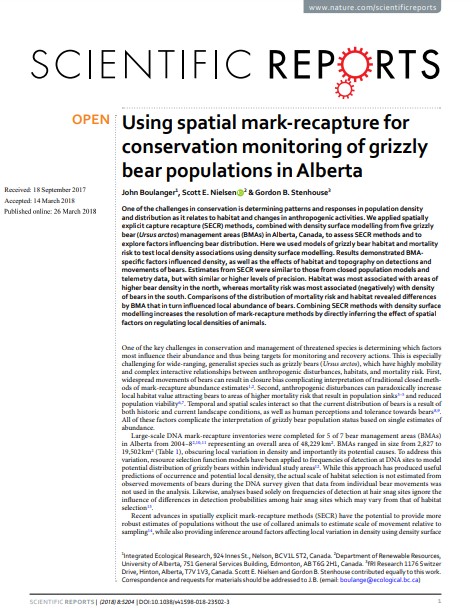Using spatial mark-recapture for conservation monitoring of grizzly bear populations in Alberta.
Bosque Modelo:
Foothills
Temática:
Conservación
Tipo de documento:
Artículo científico
Resumen
One of the challenges in conservation is determining patterns and responses in population density and distribution as it relates to habitat and changes in anthropogenic activities. We applied spatially explicit capture recapture (SECR) methods, combined with density surface modelling from fve grizzly bear (Ursus arctos) management areas (BMAs) in Alberta, Canada, to assess SECR methods and to explore factors infuencing bear distribution. Here we used models of grizzly bear habitat and mortality risk to test local density associations using density surface modelling. Results demonstrated BMAspecifc factors infuenced density, as well as the efects of habitat and topography on detections and movements of bears. Estimates from SECR were similar to those from closed population models and telemetry data, but with similar or higher levels of precision. Habitat was most associated with areas of higher bear density in the north, whereas mortality risk was most associated (negatively) with density of bears in the south. Comparisons of the distribution of mortality risk and habitat revealed diferences by BMA that in turn infuenced local abundance of bears. Combining SECR methods with density surface modelling increases the resolution of mark-recapture methods by directly inferring the efect of spatial factors on regulating local densities of animals.
Información Bibliográfica
Autor:
Boulanger, J., Nielsen, S. E., & Stenhouse, G. B.
Revista:
Scientific Reports
Año:
2018
N°:
-
País :
Canadá
Páginas:
1 - 15
Volumen:
8
Idioma:
Ingles
Palabras claves
Model forest, Adaptatation, Grizzly, Impact





